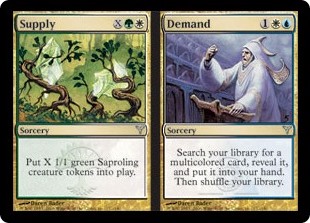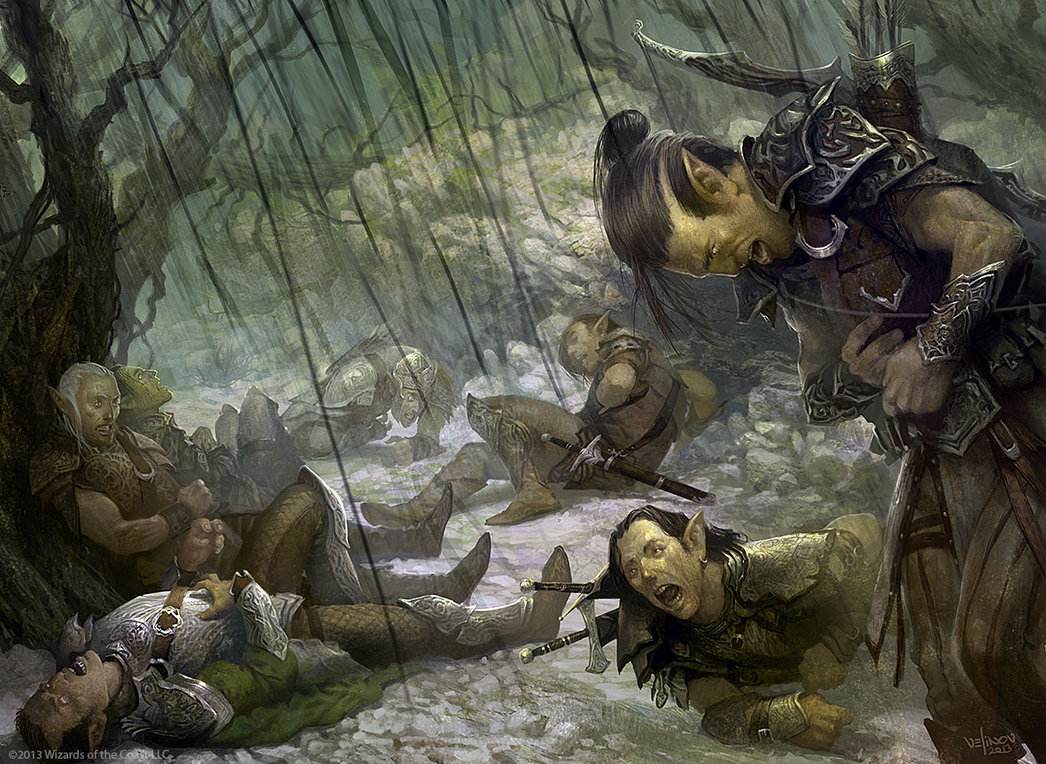Are you a Quiet Speculation member?
If not, now is a perfect time to join up! Our powerful tools, breaking-news analysis, and exclusive Discord channel will make sure you stay up to date and ahead of the curve.
Hello, Magic readers, and welcome back!
Recently I got to spend a wonderful two weeks out of the country, sightseeing other countries and their cultures. Nothing was Magic related, and nothing was “real-life” related. It was a complete disconnect as I had no access to internet for the majority of the trip. Upon returning, I was able to read about some crazy things happening in the world of Magic.
In the niche Magic culture that we're all part of, everything is intertwined. Whether you're a finance specialist, a game store owner, a competitive player, or just a casual observer, the negative actions of a select few have the potential to negatively affect us all.
I’ll be honest; I was considering continuing on with business as usual and not mentioning anything about the issues of bullying and harassment that have been going on in the Magic community. This issue has already been fully evaluated and all the opinions have been given, and Wizards of the Coast themselves have issued their thoughts and statements on the matter.
However, as I already mentioned, these issues can cause problems for everyone. Today I will be looking at how negative community aspects can cause financial rifts, both in the over-arching community and in the smaller, tight-knit community areas of an individual LGS.
The LGS
The local game store itself is the place to begin this evaluation. When something negative happens in a small area, the entity that is affected the most is the LGS. Players of a small community have a tendency to avoid confrontation wherever possible. This includes individuals who may take away from the entertainment value of playing Magic, or worse yet, bully and harass the players directly.
Financially speaking, this automatically means less sales and product influx for the LGS. The bottom line of the store is negatively affected by bullying and harassment every single time that it happens. People generally have less interest in an entertainment outlet if the positive feeling of being entertained is replaced with the negative feeling of a hostile environment. This means less of everything for the loyal customers—less sealed product, less inventory, less social interaction.
 The size of an LGS will contribute to how much it's affected. A larger and more established store has more players to interact with, meaning more ways to avoid the toxicity. Their bottom line, while negatively affected, is not hit nearly as hard as a smaller, newer LGS.
The size of an LGS will contribute to how much it's affected. A larger and more established store has more players to interact with, meaning more ways to avoid the toxicity. Their bottom line, while negatively affected, is not hit nearly as hard as a smaller, newer LGS.
In a tight-knit community everyone may know each other, sometimes very closely. If a toxic element causes people to defer to another location, the small LGS is basically left for dead. Their sales percentages will take a massive hit, and they will become unable to provide to their customers…if they are even able to retain any.
For some players and Magic financial investors, such as those in large urban areas, smaller LGS locations are not as important. However, for others in more remote and rural areas, there are not as many options for an LGS. I’ve personally been on both sides of this coin.
My shop in Glenview, Illinois is right outside of the Chicago city limits, and if that store went away, the local customers would simply move to one of the competitors. In fact, many of those regulars already have moved around to various locations based on dislike for individual (and, quite frankly, notorious) members of the community who have created bad experiences for those in their proximity.
On the other hand, my shop in Lakeland, Florida has very few options and is one of the only LGS options within an hour drive. On top of that, the unfortunate infrastructure in the state causes less cash flow overall. Other LGS locations in nearby cities such as Tampa and Orlando have already closed down, some due to extremely toxic community members, others due to lack of cash flow from their customers. If our store did poorly in Lakeland or had to deal with one of these issues, almost every regular customer would be left without another option.
The Marketplace
The local LGS is just the tip of the proverbial iceberg. The entire game suffers from these unfortunate circumstances. Regarding the long-term health of the competitive scene, the continued play of Magic by as many parties as possible makes the product retain a strong market value.
As a community, we have been fortunate to see overall growth over the last decade at an exceptionally strong rate. The number of active players in the community is estimated to have more than tripled between the release of Zendikar and the release of Return to Ravnica, and to have tripled once more in between the releases of Return to Ravnica and Theros. This all happened during an economic recession, when the amount of money the average citizen had to spend on luxury and entertainment items was at its lowest point in twenty years.
We have become accustomed to the idea that the marketplace will continue to grow for Magic cards. Despite some reprints causing a massive decline in the value of one-off staple cards (see: Iconic Masters, Serra Ascendant, Glimpse the Unthinkable), the market has seen an increase in the value of cards overall. Buyouts, competitive decks adopting new cards (see: Death's Shadow), and for the vintage collectors out there, the passage of time on Alpha/Beta/Unlimited cards, is all it takes for asset value to accrue.
However, for the demand to remain, we need to tread water in our player numbers at minimum, and minimize the number of players who leave the game for any reason. Financially speaking, it is already difficult for players to continue playing any format, with Standard decks rotating every few months and high-level Modern decks sometimes costing more than a used car.
There is still a large casual scene, and the depth of the player base through the casual scene has been a staple of price changes for less competitive cards. Despite the casual scene creating multiple reprints, there are many cards that have seen incredible price spikes, and if players begin to bow out of the game from negative experiences, that creates a black hole of missing financial potential.
The final element of the player base that is largely affected by individual toxicity is the "large tournament" scene. Grand Prix events, Star City Games Opens, and other events that draw possibly thousands of players have all seen increases in entry fees without increases in prize support over the last two years.
This is already a deterrent, and if players do not enjoy their experience, they can easily justify the financial investment to play these events as a reason to stop attending.
Being a Positive Influence
We don't have control over the financial stability of the average player, nor their general interest in the game. We do, however, have some control over whether people leave the scene over bullying and harassment problems.
We can assess what's going on in our communities and prevent negative and toxic elements before they happen. We can be positive influences on our own communities, and fight against toxicity to prevent the demise of a wonderful community within an extremely popular game.
As always, thanks for reading, and don’t forget to be excellent to each other!
Pete
@smash_pacman on Twitter






Good article, but I was under the impression you were no longer affiliated with Johnny B’s…? Also, there are at least a half dozen other LGSs within a half hour to 45 minutes proximity of Lakeland, so the LGS scene there is not so dire, thankfully
I’ve been consulting from Chicago, but a lot of what I wrote was based on the real-time experiences of my time in Lakeland. Fortunately, the LGS scene in the area has improved, but directly within Lakeland, there are limited options.
“The number of active players in the community is estimated to have more than tripled between the release of Zendikar and the release of Return to Ravnica, and to have tripled once more in between the releases of Return to Ravnica and Theros.”
That implies that with the 12 million MaRo recently stated we were at 4 million before RTR and at 1.33 million before ZEN. Do you have a reference for this? This seems very low.
Otherwise a very worthwhile read, thanks.
This is particularly with competitive scene turnouts, with the number of players attending Grand Prix events and similar competitive tournaments. For specification of total players overall, we were around 6-7 million players from 1999-2008, with Mirrodin block damaging the game and causing many players to quit due to the availability of cards and unruly price spikes.
The numbers from 2008-2012 doubled from 6 million to 12 million players (based on DCI total numbers), and from 2008-2014, the numbers more than tripled from 6 million up to 21 million.